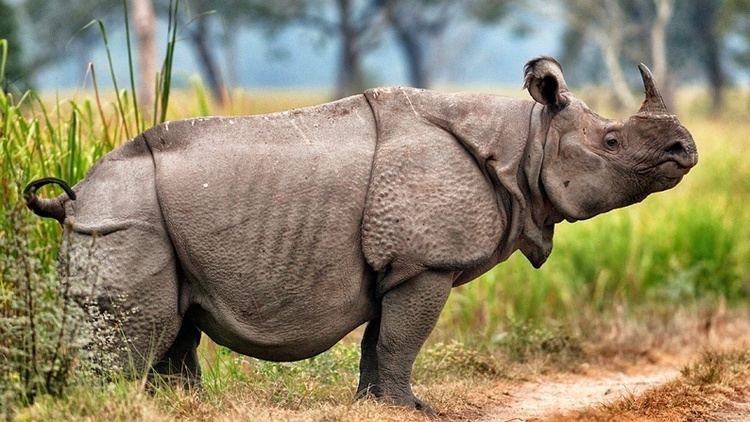News Highlight
The horns of rhinoceroses may have become smaller over time from the impact of hunting, according to a recent study published in the latest edition of People and Nature by the British Ecological Society.
Key Takeaway
- The study analysed artwork and photographs of the animal spanning more than five centuries.
- Rhinos have long been hunted for their horns.
- The five surviving rhino species are threatened by habitat loss and hunting.
- The study found that the decline in horn length rate was highest in the critically endangered Sumatran rhino and lowest in the white rhino of Africa.
Rhinoceros
- About
- A rhinoceros, commonly abbreviated to rhino, is a member of any of the five extant species of odd-toed ungulates in the family Rhinocerotidae.
- Distribution
- Two extant species are native to Africa, and three to South and Southeast Asia.
- Types
- There are five species of rhino
- White rhinos-in Africa
- Black rhinos-in Africa
- Javan Rhino-in Asia.
- One-Horned Rhino-in Asia.
- Sumatran Rhino-in Asia.
- IUCN Red List Status
- Black Rhino-Critically endangered
- White Rhino-Near Threatened
- One-Horned Rhino-Vulnerable
- Javan Rhino-Critically Endangered
- Sumatran Rhino-Critically Endangered
- India and Rhinoceros
- Only the Great One-Horned Rhino is found in India.
- It is also known as the Indian rhino,
- It is the largest of the rhino species.
The Great One-Horned Rhino
- About
- It is identified by a single black horn and a grey-brown hide with skin folds.
- Feeding
- They primarily graze, with a diet consisting almost entirely of grasses, leaves, branches of shrubs and trees, fruit, and aquatic plants.
- Habitat
- The species is restricted to small habitats in Indo-Nepal terai, northern West Bengal, and Assam.
- In India, rhinos are mainly found in Assam, West Bengal and Uttar Pradesh.
- Physical Appearance
- Indian Rhinos are brownish-grey in colour and are hairless.
- They have knobby skin that appears to be armour-plated.
- A single horn sits on top of their snout, and their upper lip is semi-prehensile.
- The Great One-Horned Rhino and Assam
- Assam has an estimated 2,640 rhinos in four protected areas, i.e. Pabitora Wildlife Reserve, Rajiv Gandhi Orang National Park, Kaziranga National Park, and Manas National Park.
- About 2,400 of them are in the Kaziranga National Park and Tiger Reserve.
- Protection Status
- IUCN Red List: Vulnerable.
- CITES: Appendix I
- Wildlife Protection Act, 1972: Schedule I.
- Threats
- Poaching for the horns
- Habitat loss
- Population density
- Decreasing Genetic diversity.
The Great One-Horned Rhino and Conservation Efforts.
- New Delhi Declaration on Asian Rhinos 2019
- It was signed by India, Bhutan, Nepal, Indonesia and Malaysia to conserve and protect the rhinos.
- DNA profiles
- Project to create DNA profiles of all rhinos by the Ministry of Environment Forest and Climate Change.
- Indian Rhino Vision 2020
- It is a unique programme where the government partnered with international, national and local organisations to conserve the rhinos.
Content Source: The Hindu



